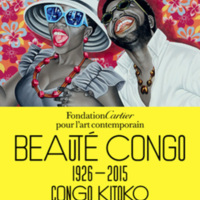
Beauté Congo – 1926-2015 – Congo Kitoko, Fondation Cartier, Paris (11 July 2015 - 10 January 2016)
A place of extraordinary cultural vitality, the creative spirit of the Democratic Republic of the Congo will be honored in the exhibition Beauté Congo – 1926-2015 – Congo Kitoko presented at the Fondation Cartier pour l’art contemporain with André Magnin, Chief Curator.
Modern painting in the Congo in the 1920s: Taking as its point of departure the birth of modern painting in the Congo in the 1920s, this ambitious exhibition will trace almost a century of the country’s artistic production. While specifically focusing on painting, it will also include music, sculpture, photography, and comics, providing the public with the unique opportunity to discover the diverse and vibrant art scene of the region.
Precursors: As early as the mid-1920s, when the Congo was still a Belgian colony, precursors such as Albert and Antoinette Lubaki and Djilatendo painted the first known Congolese works on paper, anticipating the development of modern and contemporary art. Figurative or geometric in style, their works represent village life, the natural world, dreams and legends with great poetry and imagination. Following World War II, the French painter Pierre Romain-Desfossés moved to the Congo and founded an art workshop called the Atelier du Hangar. In this workshop, active until the death of Desfossés in 1954, painters such as Bela Sara, Mwenze Kibwanga and Pili Pili Mulongoy learned to freely exercize their imaginations, creating colorful and enchanting works in their own highly inventive and distinctive styles.
Popular painters: Twenty years later, the exhibition Art Partout, presented in Kinshasa in 1978, revealed to the public the painters Chéri Samba, Chéri Chérin, and Moke and other artists, many of whom are still active today. Fascinated by their urban environment and collective memory, they would call themselves “popular painters.” They developed a new approach to figurative painting, inspired by daily, political or social events that were easily recognizable by their fellow citizens. Papa Mfumu’eto, known for his independent prolific comic book production and distribution throughout Kinshasa in the 1990s, also explored daily life and common struggles throughout his work. Today younger artists like J.-P. Mika and Monsengo Shula, tuned-in to current events on a global scale, carry on the approach of their elders.
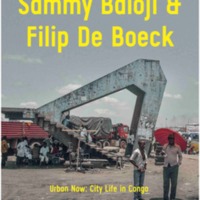
Urban Now: City Life in Congo, Various Venues (2016-2017)
This exhibition by photographer Sammy Baloji and anthropologist Filip De Boeck offers an exploration of different urban sites in Congo, through the media of photography and video. Focusing upon the “urban now”, a moment suspended between the broken dreams of a colonial past and the promises of neoliberal futures, the exhibition offers an artistic and ethnographic investigation of what living – and living together – might mean in Congo’s urban worlds.
As elsewhere on the African continent, Congo’s cities increasingly imagine new futures for themselves. Today, these new urban dreams often only manifest themselves in the form of billboards and advertisements for the city to come, inspired by Dubai and other recent hot spots from the Global South. Ironically, the city model they propose invariably gives rise to new geographies of exclusion that often take the form of gated communities and luxury satellite towns designed for a still somewhat hypothetical local upper middle class.
In sharp contrast with these neoliberal imaginings, the current infrastructure of Congo’s cities is of a rather different kind. The built colonial legacy has largely fallen into disrepair. Its functioning is punctuated by constant breakdown, and the city is replete with disconnected fragments, reminders and echoes of a former modernity that continues to exist in a shattered form. These failing material infrastructures greatly impact upon the quality of the city’s social life, and push it to the limit of what is livable. Yet Congo’s urban residents constantly engage in inventing new social spaces to bypass or overcome breakdown, exclusion, poverty and violence. Exploring these spaces, the exhibition captures a more inhabitable and inclusive urban world, where the possibilities of collective action and dreams of a shared future continue to be explored.
Curator: Devrim Bayar
The exhibition is organized in collaboration with and will travel to Galerias Municipais/EGEAC, Lisbon, and The Power Plant, Toronto.
With the support of the Research Fund of KU Leuven and Imane Farès Gallery, Paris.
In collaboration with Kunstenfestivaldesarts & Summer of Photography 2016.
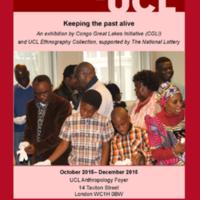
Keeping the Past Alive, UCL Anthropology Foyer (October 2015 - December 2015)
Keeping the Past Alive is a partnership between University College London's Ethnography Collection and Congo Great Lakes Initiative. The exhibition reflects the stories that Congolese community members share as and how they interact with objects, either personal, provocative or relational. It is divided into three topics: traditional power objects, sacred rituals and medicine, and everyday life. The objects on display tell stories, sometimes with a metaphor of their own, which will, we hope, make visitors internalize and discuss the messages they bring. This exhibition is the final step of our collaboration with Congo Great Lakes which started one year ago. During the project, an interactive platform which can host online exhibitions has been developed. The platform collects archives and documentation and shares the data with Horniman and UCL Congolese collections and members of CGLI.
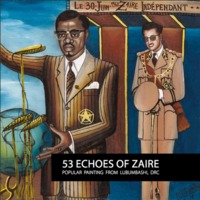
53 echoes of Zaire: Popular Painting from Lubumbashi Democratic Republic of Congo, Sulger-Buel Lovell Gallery, London (27 May – 30 June 2015)
Popular Painting is a genre traceable to the 1920s, which chronicles contemporary social and political realities in Congo (then Zaïre). This art movement remains very little known outside the continent. Scholars have dedicated their research activities to Popular Painting. They often knew the main actors of the movement in the early 1970s, and shared this knowledge by publishing articles, books and exhibition catalogues. “ During a brief period between the late sixties and the late seventies, popular genre painting bloomed in the urban and industrial Katanga region of the Democratic Republic of the Congo Artists, most of them self-educated, produced paintings (acrylics or oils on canvas reclaimed from flour sacking) for local use. Through a limited number of recurrent topics, they articulated a system of shared memories.
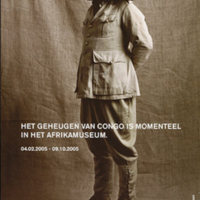
The Memory of the Congo in the Colonial Era, Royal Museum for Central Africa, Tevuren, Belgium ( 4 February 2005 - 9 October 2005)
With this exhibition, the RMCA aims to contribute to the highly topical debate concerning the colonial history of Congo and Belgium.
Visitors learn more about this controversial period through little-known objects, works of art, documents, films, and photographs. Filmed interviews with Belgians and Congolese give a voice to the past in a lively confrontation with memories and emotions. Memory of Congo, through specific themes and diverse narratives, revisits this turbulent chapter in history
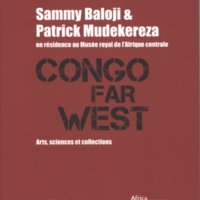
Artists in Residence. Sammy Baloji & Patrick Mudekereza,
Congo Far West, Royal Museum for Central Africa, Tevuren, Belgium (11 May – 4 September 2011)
In this exhibition the artists Sammy Baloji and Patrick Mudekereza present us with a contemporary take on the colonial past. As artists in residence in the museum they got carte blanche in the museum collections. In dialogue with scientists from the museum they have started working with a few collection pieces dating from the beginning of Congo’s colonial history. These collection pieces exhale the atmosphere of the conquest of Congolese territory by the West. The leitmotif of the exhibition ‘Congo Far West’ refers not only to this territorial conquest, but also to the contemporary Congolese artists who artistically and intellectually recapture the collection pieces conserved in the West.
Patrick Mudekereza is a writer and poet but he also writes texts for comic strips, exhibitions and audiovisual art. During his time in the museum he is working on a hybrid sculpture entitled L’art au Congo which raises a whole host of questions, and treaties signed with a cross which sealed the transfer of land from the local chefs to Leopold II. Photographer Sammy Baloji is working on a series of photographs and watercolours from a colonial exhibition led by Charles Lemaire. He has already exhibited in cities such as Paris, Bamako, Brussels, Cape Town and Bilbao. A Beautiful Time, his first solo exhibition in the United States, taking place in the Museum for African Art in New York, will be on show in in the Smithsonian National Museum of Natural History in Washington in 2012. Sammy Baloji and Patrick Mudekereza both live and work in Lubumbashi in DR Congo. Together they are organising the photography biennale Rencontres Picha in Lubumbashi, the third edition of which will take place in 2012.
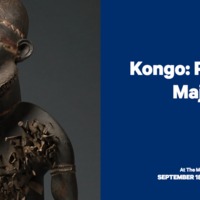
Kongo: Power and Majesty, Metropolitan Museum of Art, New York (18 September 2015 - January 3 2016)
Central Africa's Kongo civilization is responsible for one of the world's greatest artistic traditions. This international loan exhibition explores the region's history and culture through 146 of the most inspired creations of Kongo masters from the late fifteenth through the early twentieth century.
The earliest of these creations were diplomatic missives sent by Kongo sovereigns to their European counterparts during the Age of Exploration; they took the form of delicately carved ivories and finely woven raffia cloths embellished with abstract geometric patterns. Admired as marvels of human ingenuity, such Kongo works were preserved in princely European Kunstkammer, or cabinets of curiosities, alongside other precious and exotic creations from across the globe.
With works drawn from sixty institutional and private lenders across Europe and the United States, Kongo: Power and Majesty relates the objects on view to specific historical developments and challenges misconceptions of Africa's relationship with the West. In doing so, it offers a radical, new understanding of Kongo art over the last five hundred years.
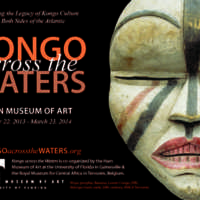
Kongo Across the Waters, Princeton Art Museum (25 October 2014 - 25 January 2015)
Kongo across the Waters examines 500 years of cultural exchange between the Kongo, Europe, and the United States, showing the rise of Kongo as a major Atlantic presence and the transmission of Kongo culture through the transatlantic slave trade into American art.
Drawing from the incomparable collections of the Royal Museum for Central Africa in Tervuren, Belgium, including masterpieces that have never before been seen in the United States, this groundbreaking exhibition investigates how the Kingdom of Kongo in West Central Africa evolved over five centuries and contributed to the cultural life of enslaved Africans and their descendants in North America. Manuscripts, maps, engravings, photographs, and videos provide contextual information, and the accompanying 448-page catalog further explores the art of the Kongo and of the Kongo diaspora.
Kongo across the Waters is a joint project organized by the Samuel P. Harn Museum of Art, University of Florida, Gainesville, Florida, and the Royal Museum for Central Africa, Tervuren, Belgium, and is supported by an indemnity from the Federal Council on the Arts and the Humanities. At Princeton, supplementary interpretive content has been developed by the Princeton University Art Museum. The exhibition at Princeton has been made possible by generous support from the National Endowment for the Arts; the Frances E. and Elias Wolf, Class of 1920, Fund; Susan and John Diekman, Class of 1965; the David A. Gardner ’69 Magic Project; the Department of Art and Archaeology, Princeton University; and an anonymous fund. Additional funds have been provided by the Allen R. Adler, Class of 1967, Exhibitions Fund; Heather and Paul G. Haaga Jr., Class of 1970; Holly and David Ross; Andrew W. Mellon Foundation; the New Jersey State Council on the Arts/Department of State, a Partner Agency of the National Endowment for the Arts; and by the Center for African American Studies, the Program in African Studies, the Office of Religious Life, the Lewis Center for the Arts, and the Department of English, Princeton University. Further support has been provided by the Partners and Friends of the Princeton University Art Museum.
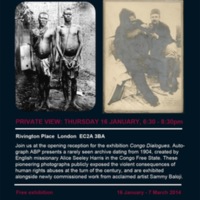
'When harmony goes to hell'. Congo Dialogues: Alice Seeley Harris and Sammy Baloji, Rivington Place, London (16 January - 7 March 2014)
Autograph ABP presents a rarely seen archive dating from 1904, created by English missionary Alice Seeley Harris in the Congo Free State. These pioneering photographs publicly exposed the violent consequences of human rights abuses at the turn of the century, and are exhibited alongside newly commissioned work from acclaimed contemporary Congolese artist Sammy Baloji.
In the early 1900s, the missionary Alice Seeley Harris produced what was probably the first photographic campaign in support of human rights. She exposed the atrocities that underpinned King Leopold II’s regime in the Congo Free State, bringing to public attention the plight of the Congolese people under a violent and oppressive regime.
These photographs fundamentally shifted public awareness of the deep-rooted hypocrisy of King Leopold II’s promise of colonial benevolence, and caused an outcry at the time of their publication in Europe and America.
Over 100 years later, these issues remain of primary concern to Congolese citizen and artist Sammy Baloji. Like Harris, Baloji uses photography as a medium to interrogate current political concerns with reference to the past. Acclaimed for his photomontage works that juxtapose desolate post-industrial landscapes with ethnographic archival imagery, Baloji explores the cultural and architectural ‘traces’ of a country forever haunted by the spectres of its colonial past; in particular, the southeastern Katanga province and its capital, the city of Lubumbashi.
In this new body of work-in-progress, commissioned by Autograph ABP, Baloji continues to investigate the colonial legacies and fractured histories that haunt contemporary Congolese society. Notions of African utopias, post-colonial disillusionment, and a quest for authenticity amidst ‘the ruins of modernity’ define Baloji’s multi-layered practice: the impact of Western imperialism, Maoist communism, urban segregation and colonial sanitation politics as well as the unending mineral exploitation of the Congo’s natural resources, and with it the tragedies and traumas of state-controlled violence and ongoing human rights abuses.
Congo Dialogues marks the 175th anniversary of Anti-Slavery International and the invention of photography. The first major solo showcase of Sammy Baloji’s work in the UK, this exhibition presents a unique opportunity to see both historical and contemporary works interrogating the Congo and its colonial legacies. The Alice Seeley Harris archive was last shown to the public 110 years ago.
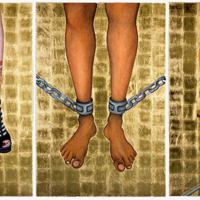
House Slave - Field Slave I and II
'House Slave - Field Slave: A Portrait of Contemporary Slavery' by Nicola Green was first exhibited at the Dulwich Picture Gallery in October 2007. It was then exhibited as part of Haringey's Black History Month at Bruce Castle Museum in October - December 2010. Nicola's triptych is now in the permanent collection at the International Slavery Museum in Liverpool.
Nicola Green's portrait of contemporary slavery 'House Slave - Field Slave' was made for and in collaboration with Anti-Slavery International to commemorate the anniversary of the abolition of the slave trade in 2007. The exhibition consists of a large 'altarpiece' scale triptych with preparatory studies. These are set alongside artefacts of contemporary slavery from the International Slavery Museum in Liverpool and the extraordinary photos and text from Anti-Slavery International, which inspired this work. The painting tells the story of contemporary slavery. There are an estimated 12 million people in the world today who are still enslaved - even though the British slave trade was abolished 200 years ago.